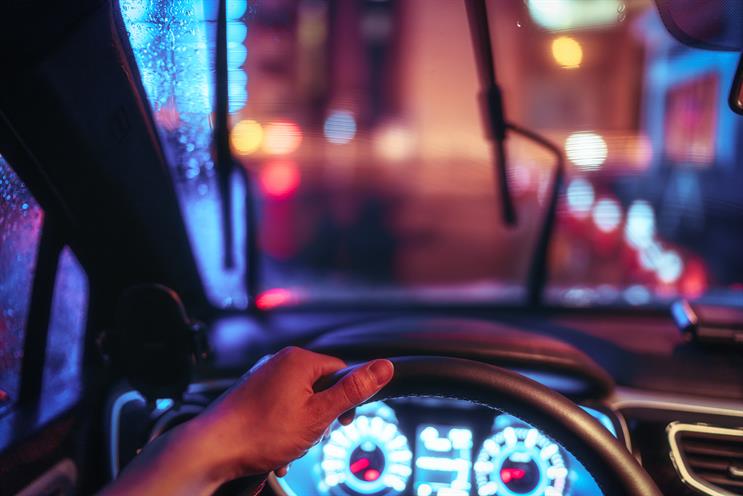
The first car powered by an internal combustion engine was invented almost 140 years ago. In that time, communication technology has gone from the telegraph to telephones to dial-up internet to mobile phones to wireless 5G. Yet, the progress of cars has resolutely stayed in the slow lane, providing the same service as they always have: shuttling us from A to B.
But things are changing. Dramatically. Cars are no longer a tin oasis, where we are unplugged and unconnected. Automation and communication breakthroughs mean the outside world is now accessible to drivers and passengers.
Now, cars are where experiences can happen.
From billboards beaming insights into passing cars, to pop-ups on a digital dashboard, and real-time information from a smart speaker, cars are becoming more integrated with every aspect of our digital lives.
It’s a whole new world for brands, and this is how Waze’s solutions are helping marketers capitalise.
The great third space opportunity
Waze, a free driving app that uses real-time data for its map and is supported by a native advertising platform where business can show up with contextual or local relevance, has seen the potential of in-car marketing for longer than most. It sees it as the “third space”, which, while it can take multiple forms, represents both the new state and boundless future of on-the-go, in-car connectivity.
Waze navigation data recorded a 27% increase in both the number of drives and kilometres driven globally in the first quarter of 2022 compared to the same period a year earlier. And in the UK, drivers are far more active than they were last year, with Waze data showing a 59% increase in drives and 75% increase in kilometres driven in the first quarter of 2022 when compared to the first quarter of 2021.
The opportunity? Advertisers can reach in-car audiences and influence their journeys and purchasing habits.
“Despite sophisticated public transport networks and the rapid rise and development of eCommerce, driving by car is still such an integral part of lives in the UK,” says Ruairidh Roberts, country manager at Waze UK. “The uptick in navigations reinforces that our needs, and means of fulfilling them, haven’t changed. That makes it easy to see how crucial connected cars will be in reaching and connecting with on-the-go consumers moving forward.”
More than two-thirds of new cars registered in the UK are connected, a figure that will rise to 100% by 2026. With an increase in voice-activated assistance apps and the integration of streaming services, the car is increasingly becoming an additional space of convenience.
Unsurprisingly, car manufacturers have caught on to the untapped value of the third space. Last year, one carmaker filed a patent that uses a car’s camera systems to read off-road ad hoardings and present ads from the same brand on in-car screens.
“More and more, drivers are relying on their connected cars to be their virtual assistants,” says Roberts. “They expect connected cars to know their habits, their preferences and their cravings. Brands that build experiences that fit seamlessly in this ecosystem will have huge opportunities.”
The dos and don’ts
Let’s be honest. Sometimes, it’s nice to have a break from ads. So, while there is a huge opportunity in the third space, it is important to tread lightly.
“The car is a sacred headspace for a lot of people, so they’re going to have a low tolerance for annoyances,” says Roberts. “But just as we’ve all learned previously with mobile and voice-assistant marketing, the key for brands to be welcomed, revisited and, perhaps eventually, loved is to always add value up front. And then to add more nuanced opportunities for engagement as you earn the trust of on-the-go consumers.”
If brands want to be asked along for a second ride, here are some key things to remember:
Earn permission: Be transparent with data. Assure it is private and secure, and then you can start building relationships in a personal way. Privacy-compliant, connected car data means providing a genuine value exchange will become the norm. For example, if a driver is on their way to a supermarket, they might welcome a promotion on an fmcg product; similarly, they might enjoy an advertiser bringing a movie release to life by changing the Waze voice to a character.
Frictionless experiences: Voice commands, fewer taps, intuitive functionality: we all expect this from our phones, so the third space experience should be no different.
Experiment, experiment, experiment: Brands looking to make progress in the third space should have fun and take risks; not everything is about transactions, so ensure you’re delivering experiences. It’s a challenger space, so be pioneers.
“The third space is an exciting opportunity because of the exclusive, in-the-moment communication opportunity it creates,” says Roberts. “That means brands should treat it as such by offering different ideas and promotions than they may for their core campaigns. It’s a chance for brands who are new to those individual consumers to really stand out.”
The third space is now
The next decade promises to see the car advance more than it ever has since the first few rolled off the production line in 1896. Brands need to be at the forefront of this, or risk getting left behind. Building a third space strategy is perhaps the most future-forward move a marketing leader can make right now.
“When you think about the opportunities brands have to make their case to consumers, almost nothing tops the intimacy and opportunity of the third space,” says Roberts. “It’s exciting to think about what innovations brands who master the third space will introduce, as they’ll not only be seen as visionaries, but they’ll also reap more market share in what is destined to become an extraordinarily important and competitive marketing space.”
Find out more about how Waze can help brands capitalise on the third space, and how to build a strategy that targets consumers on the go, by visiting here.


